From mushrooms to demons: 10 types of zombies that changed my view of the genre (15 photos)
We've become so accustomed to this image that we sometimes forget: zombies come in a variety of terrifying forms. Not all of them are slowly shambling creatures in rags, hungry for fresh brains. Some are the product of dark magic, others are the result of a glitch in the genetic code, and still others are simply flesh puppets, pulled by the strings of someone else's will. Make yourself comfortable. Let's go 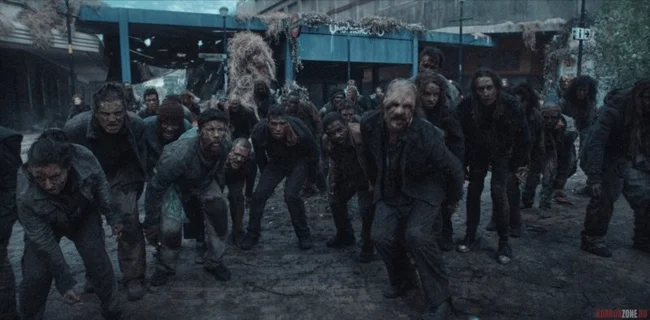
Magic vs. Death 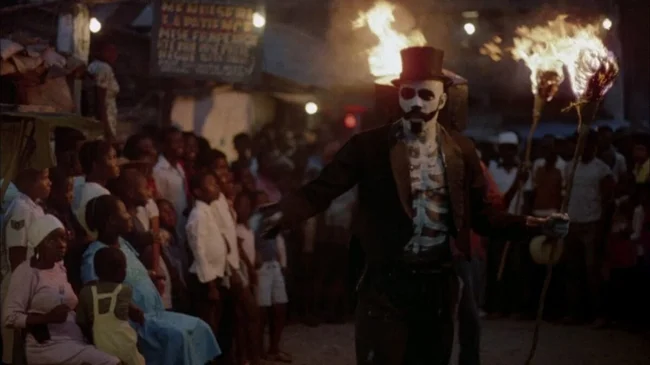
Let's start with the classics - zombies of magical origin. No one bit them, no virus has anything to do with it. These guys rise from their graves thanks to dark rituals. Remember the 1988 film "The Serpent and the Rainbow". There, everything revolves around Haitian voodoo traditions, where "zombification" is a very real punishment, say, for stealing land. The accused could be put to sleep with a special powder, buried (sometimes alive), and later dug up. After this, the person would return broken, an obedient puppet. And this, by the way, is not a fiction of scriptwriters, but part of documented practices. This is how zombies first stepped into popular culture. 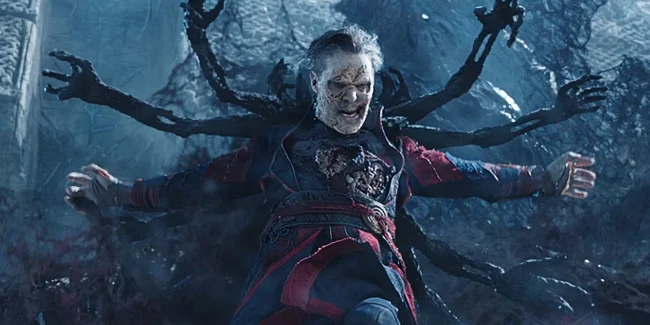
Later, this image, of course, mutated. Take, for example, Doctor Strange in the Multiverse of Madness (2022). There, magic revives the hero's own body. Strange, using the powerful artifact Darkhold, literally pulls his own corpse out of the grave and - voila! - back in action. Well, for a while. You can also bring in Stephen King's Pet Sematary, where the cursed Indian land brings the dead back to life, but already... different. Distorted, deprived of humanity.
And in the cult Italian horror The Seventh Gate of Hell (1981) by Lucio Fulci, clearly inspired by Lovecraft, zombies are a consequence of opening a gate to another dimension. These dead do not seek to infect others; they have no purpose, they just are. They themselves are a curse, not its carriers. Creepy, right?
When "Hell is Overcrowded" 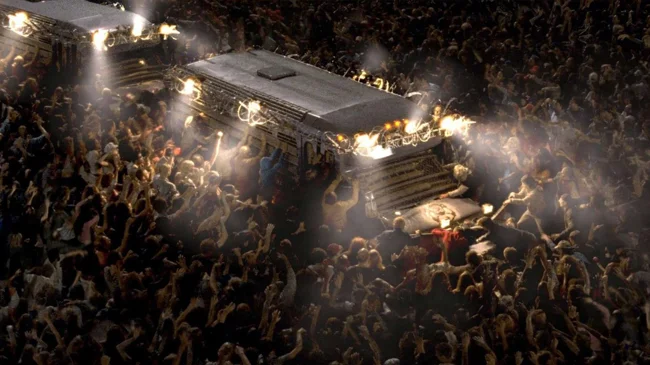
The next type is a zombie straight from the George Romero universe: "Night of the Living Dead" (1968), "Dawn of the Living Dead" (1978), and so on. There is no specific virus here, and a bite is not the cause of transformation, but rather a way to quickly send you to the next world, from where you will return anyway.
The very fact of death triggers... a reboot. Any dead person, if his brain is intact, rises. Why? Who knows. Some point to radiation from space, others - to God's punishment. That's not the point. The main thing is that these zombies have no soul. Whatever is moving that body, it is no longer Bill, or Susan, or your neighbor. And this applies to everyone. Died of a heart attack? You'll come back. Shot? You'll come back too. This approach makes zombies a metaphor for the total end, a collective nightmare. Each of us is a potential walking corpse. Scary? You bet.
A mushroom that thinks for you 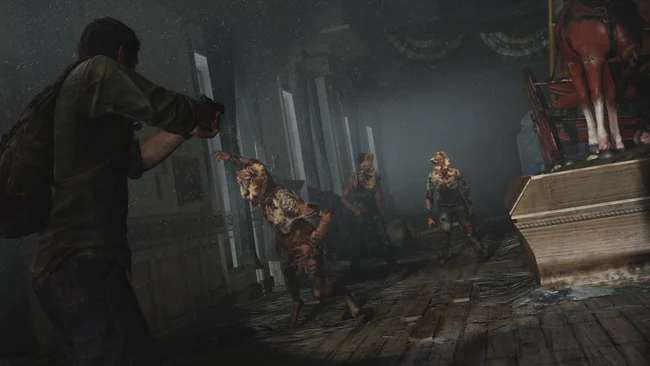
But this category draws inspiration straight from Mother Nature. The Cordyceps mushroom is not a fiction. It really exists and turns, for example, ants into real "zombies", controlling their behavior to spread its own spores. This creepy concept is the basis for some of the most terrifying zombies (or almost dead ones) in the gaming industry – the infected from The Last of Us (2013).
Here, people don't die in the usual sense. The fungus penetrates the body, takes over the nervous system, rewrites instincts. The person seems to be alive, but it's not him anymore. It's part of something bigger, a creepy biological program that uses the body as an incubator and transport. Over time, bodies mutate, becoming covered in fungal growths, losing human features, all individuality. This is neither life nor death. It's something third, alien and frightening. A creepy prospect, isn't it?
A lab error 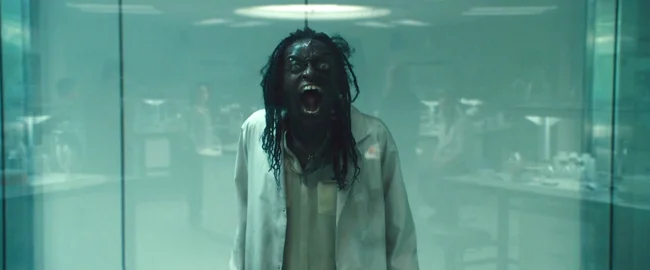
One of the most recognizable and replicated types is a zombie of viral origin. Everything is canon here: a leak from a secret laboratory, rapid infection, death and - the inevitable uprising. Films like "World War Z" (2013), TV series like "The Walking Dead" (since 2010), games and even comedies like "Zombieland" (2009) are built on a similar scheme. The virus kills the host, and then reboots his body, turning him into an aggressive machine for killing and spreading infection.
And although these corpses often lose their ears and rot their limbs, for some reason they run faster than they did in life, jump over cars and even manage to create "live waves" like in some strategy game. You can become infected through a bite or exposure to infected blood. The virus is just a tool here. The main thing is the principle itself: death as a transitional stage before a terrible "rebirth". This scenario works great for creating panic: one infected person - and now the whole city is engulfed in chaos. But what if the virus doesn't kill right away?
Alive, but not those 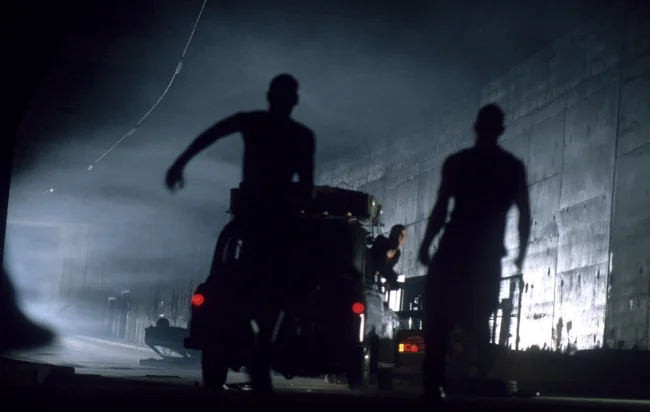
Of particular interest are the infected who technically do not die. Their bodies remain alive, but their minds... they evaporate. This is, so to speak, a "viral-alive" type. The most striking example is the film "28 Days Later" (2002) by Danny Boyle. The Rage Virus does not kill. It... switches a switch in the brain, turning a person into a machine of uncontrollable anger. It is transmitted through blood or saliva, and acts in a matter of seconds. The infected do not rot, do not wander aimlessly - they rush headlong, destroying all living things. This is rage, raised to the absolute. 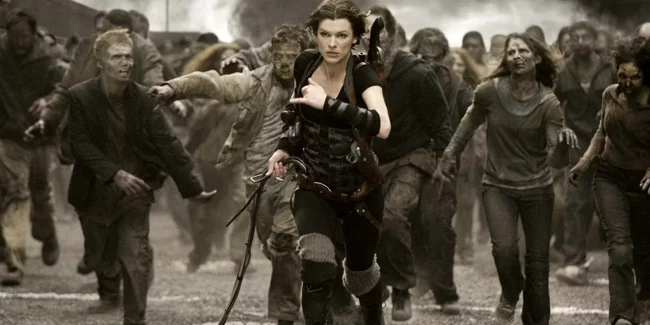
A similar principle, but on a larger scale, works in the Resident Evil series of games and films (Resident Evil, first game – 1996). The Umbrella Corporation has done all sorts of things there with its viruses that change living tissue. The victim often remains in his body, but no longer controls it. The virus often causes terrible mutations, turning people into creatures such as Lickers or Tyrants. Here, it is no longer just zombies, but a whole bestiary of modified creatures. The key difference is that death is not necessary for transformation. The process begins during life. So who are they – are they still people or something else?
Hell Within 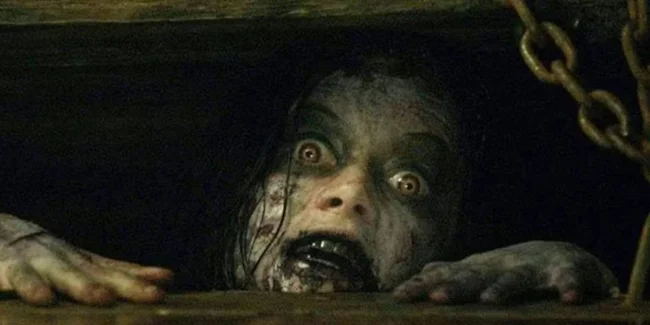
If magic can revive the dead, and viruses and fungi can modify the living, then the Deadites from The Evil Dead (1981) are pure, unadulterated evil. Demons for whom the human body is just a temporary vessel, a toy.
The sinister Book of the Dead, the Necronomicon ex-Mortis, found in an abandoned forest cabin, triggers a chain reaction of obsession. Victims, both living and deceased, lose control, turning into mad, sarcastic, hysterical machines for causing pain and suffering.
They fly, laugh, spew obscenities, and make elaborate mockery of those lucky (or unlucky) to survive. They can only be killed by completely destroying the body. Sometimes - with the help of a trusty chainsaw instead of a hand. These "zombies" are not hungry in the usual sense. They do not want your flesh. They want your soul. Or at least a good exorcism session.
Flesh on screws 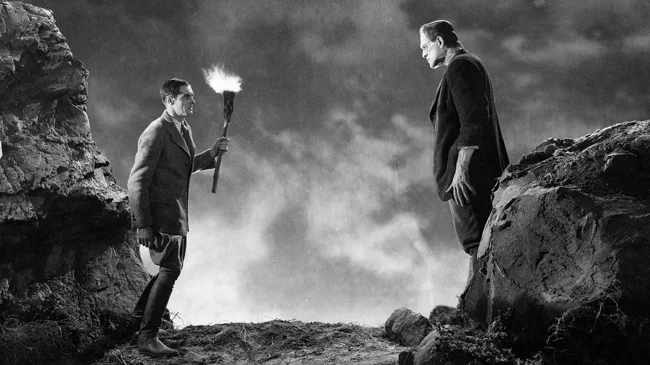
Frankenstein's monster - he is not a zombie in the usual sense. Rather, he is a pioneer of the scientific approach to "reanimation". Victor Frankenstein's creation is not dead, but not quite alive either. It is assembled from parts of different bodies, revived by a powerful electric discharge, but no one has given him a soul. He wanders the world, tormented by the question of why he was created, causing only horror and rejection in people. He does not have the blind rage of a classic zombie. Only pain and misunderstanding. In Jewish mythology, there is a concept of "golem" - a creature made of clay, revived by magic, but soulless. This is roughly how Frankenstein's monster is perceived - a shell that has acquired the ability to move, but is deprived of the meaning of existence.
Chemical experiment 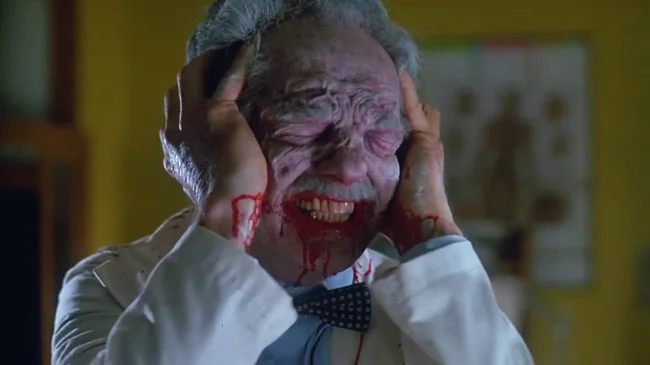
But Herbert West's "Reanimator" from the 1985 film of the same name (based on Lovecraft's stories) is a different story, although it is also about scientific arrogance. Dr. West tries to revive the dead with the help of his fluorescent serum. The method is simple: inject and see what happens. The effect? Well... specific. Screams, panic, uncontrollable aggression. The dead come to life, but become extremely unstable, insane, and, characteristically, literally fall apart. Moreover, the longer the body has lain lifeless, the more insane its "return". Such "zombies" do not pose a threat of infection. They are a side effect of playing God. Science is capable of creating monsters no worse than ancient magic.
Radiation as a curse 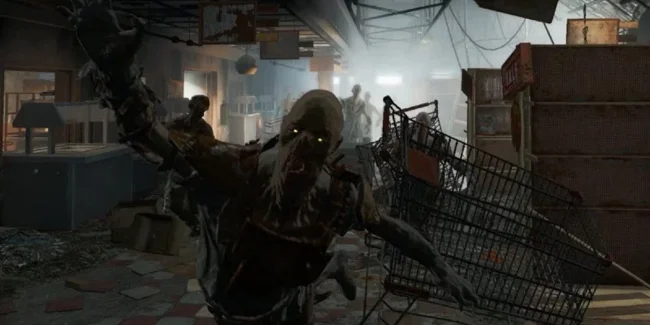
Ghouls from the Fallout universe are a whole other story. Technically, many of them are alive. But after prolonged exposure to radiation, they begin to lose their human appearance, reason, and sense of time. First, burns, hair loss. Then, changes in behavior, personality degradation. The result is wild, aggressive creatures capable of attacking for no apparent reason.
Sometimes there are those among them who still retain the remnants of reason and memory of a past life, but most often these are empty, feral shells. This is a clear result of how far humanity can go in games with atomic energy. These "zombies" do not have an infectious nature. They were not created in a laboratory, they were not infected with a virus - they themselves, slowly and painfully, walked the path to oblivion, standing under an invisible nuclear rain. What is it like to slowly lose yourself under invisible rays?
Almost forgotten horrors 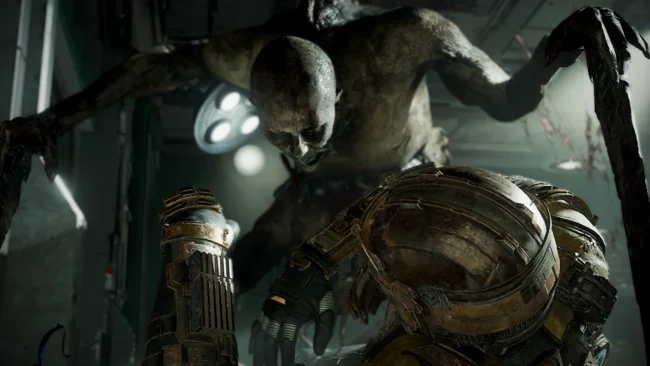
But there are other, even more exotic options. For example, necromorphs from the Dead Space series of games (the first one was released in 2008). These are not pure zombies, but rather corpses transformed by the signal from the so-called Markers – mysterious alien artifacts. These structures emit a special impulse that drives the living to madness, and the dead – makes them change monstrously.
The bodies grow blades, tentacles, lose all anatomical framework. These creatures do not simply attack – they actively infect new corpses, replenishing their army. The apotheosis of this process can be the fusion of all biomass into a single colossal creature, the size of a small moon. Horror. 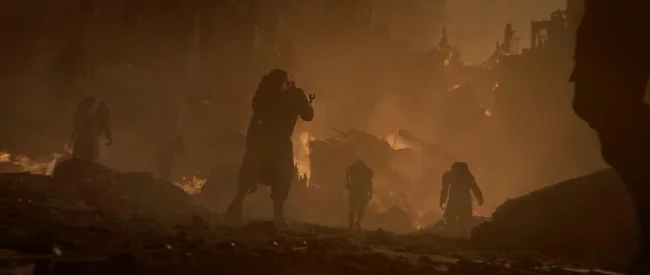
And in the dark universe of Warhammer 40,000, in particular in the story arc "Pariah Nexus", we encounter a phenomenon when people for no apparent reason lose their will, fall into apathy, and then become aggressive, soulless performers. This is the result of the influence of the Necron Obelisks - an ancient alien race. Do these people die? Not necessarily. But they lose themselves, their personality. Like ghouls or carriers of cordyceps, they just... disappear from the inside. Only an obedient shell remains. It seems that not only Earth is capable of giving birth to walking (and not so) corpses. 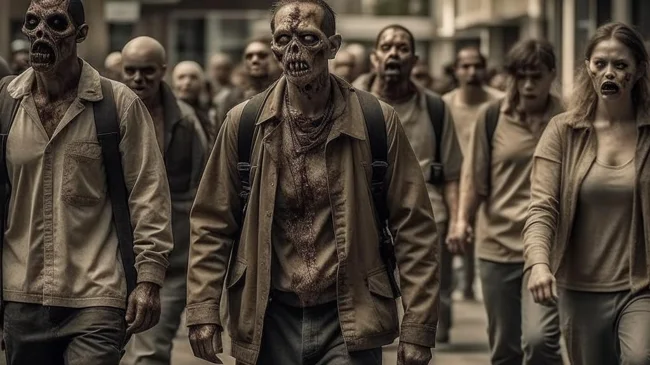
Final without a period
This is the kind of zoo (or rather, morgarium?) we got. We are accustomed to the image of a zombie that hobbles towards us, stretching out rotting hands. But behind this seemingly simple picture there are dozens of interpretations and incarnations. Magic. Virus. Fungus. Radiation. Demonic possession. A scientific experiment that got out of control. Each scenario has its own nature, its own rules of the game. And each one is a reflection of our deepest fears. Fear of death, fear of illness, fear of losing control over our own body and mind. Fear of losing yourself, your will, becoming a puppet in someone else's hands or just soulless biomass.
So, if someone next time says that zombies are boring and banal, well, you know what to say. Or just show a couple of examples from this list. Let them choose which of them they would prefer not to meet in a dark alley.
Although... to be honest, it would be better to meet no one at all.






















